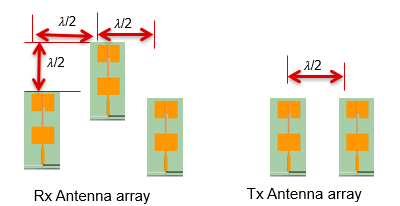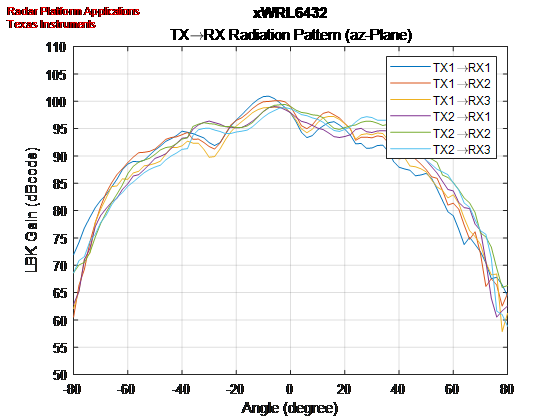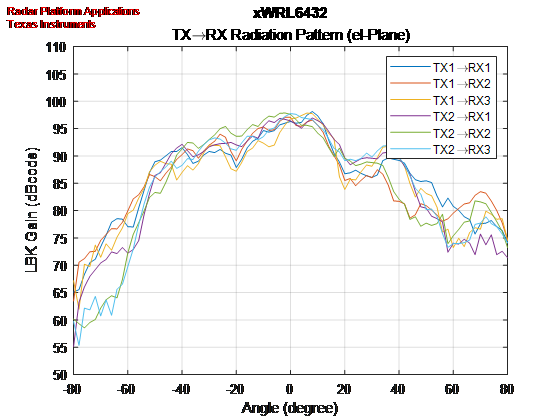SWRU596 December 2022
- 1Abstract
- 2Getting Started
- 3Hardware
- 4EVM Mux Block Diagram
- 5PCB Storage and Handling Recommendations:
- 6XWRL6432BOOST Antenna
- 7Software, Development Tools, and Example Code
- 8TI E2E Community
- 9References
6.1.1 Transmitter and receiver virtual array
Transmitter and receiver antennas positions in Figure 6-2 form a virtual array of 6 transmitter and receiver pairs. This allows object detections finer azimuthal angular resolution (29°) and coarse elevation angular resolution (58°). Receiver antennas are spaced at distance D (Lambda/2) and Transmitter antenna Tx1 and Tx2 spaced at 2D (lambda) in azimuthal plane and D (Lambda/2) in elevation plane. Tx1 and Tx2 are placed at D (lambda/2) in the elevation and 2D (Lambda) in azimuth plane.

 Figure 6-2 Virtual antenna array
Figure 6-2 Virtual antenna arrayFigure 6-2 shows the antenna radiation pattern with regard to azimuth and Figure 6-3 shows the antenna radiation pattern with regard to elevation for TX1 and TX2. Both show the radiation pattern for TX1 and TX2 and RX1, RX2 and RX3 together. All of the measurements were done with a Tx and Rx combination together. Thus, for the -6dB beam width, you must see a -12db (Tx (-6dB) + Rx(-6dB)) number from the boresight.
 Figure 6-3 Azimuth Antenna Radiation Patterns
Figure 6-3 Azimuth Antenna Radiation PatternsMeasured azimuthal radiation pattern for all Tx to Rx pairs (Corner reflector placed at ~5 meters with a 4- GHz bandwidth chirp starting at 59GHz)
 Figure 6-4 Elevation Antenna Radiation Patterns
Figure 6-4 Elevation Antenna Radiation PatternsMeasured elevation radiation pattern for all TX to RX pairs (Corner reflector placed at ~5 meters with a 4-GHz bandwidth chirp starting at 59GHz)